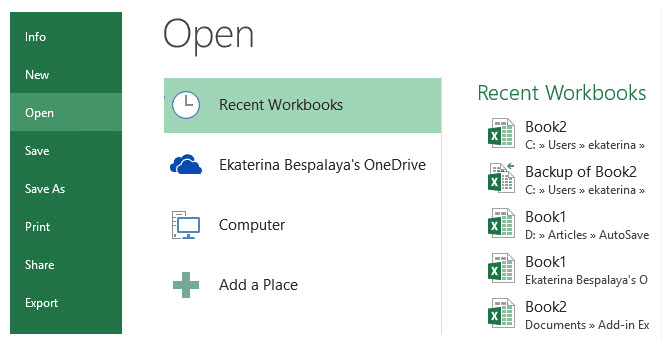5 Ways to Recover Deleted Excel Sheet on Mac

Discovering that an essential Excel sheet has been deleted can be a nightmare, especially when deadlines are looming. Fortunately, for Mac users, there are several tried-and-true methods to recover those crucial spreadsheets. In this guide, we'll explore five effective ways to recover your deleted Excel sheets, ensuring you don't lose valuable data.
1. Check the Trash or Bin

Before panicking, the first and often most effective step is to check your Mac's Trash. When files are deleted, they're typically moved here rather than being permanently removed.
- Open the Trash icon on your dock.
- Locate your Excel file. You can use the search function to find it more quickly by typing in the file name or part of it.
- Right-click (or control-click) on the file and select “Put Back” to restore the file to its original location.
♻️ Note: Files in the Trash will remain there until you empty the Trash, so act quickly to recover your file if necessary.
2. Use Time Machine

If you've enabled Time Machine backups, recovery becomes much simpler.
- Connect your Time Machine backup drive.
- Open Time Machine from the menu bar or System Preferences.
- Navigate through your backups to find the date and time when the Excel sheet was still present.
- Once you've found the file, select it and click “Restore” to bring it back to its original location.
3. Employ Recovery Software

If the file is not in the Trash or not backed up, specialized recovery software like:
- Disk Drill
- Stellar Data Recovery
- EaseUS Data Recovery Wizard
These can help:
- Install and run the recovery software.
- Select the volume or device where the Excel file was stored.
- Begin the scan process. The software will search for recoverable files.
- Once the scan is complete, review the list of recoverable files. Excel files might appear under spreadsheets or specific file formats like .xls or .xlsx.
- Select the file you want to recover and proceed with the recovery process.
4. Use AutoRecover Feature

If Excel was set to automatically save your work:
- Open Excel.
- Go to File > Info > Manage Workbook, then click Recover Unsaved Workbooks.
- Look for versions of your file that might be recoverable.
💡 Note: The AutoRecover feature needs to be enabled in Excel settings for this to work.
5. Recycle Previously Saved Versions

Another lesser-known but incredibly useful feature in Excel for Mac is version history:
- Open the Excel workbook.
- Navigate to File > Info > Browse Versions.
- Here, you'll find different versions of the file saved automatically by Excel.
- Select the version prior to the deletion and recover it.
| Method | Requires Backup/Software? | Timeframe to Act |
|---|---|---|
| Check the Trash/Bin | No | Before Trash is emptied |
| Time Machine | Yes | As long as backups exist |
| Recovery Software | Yes | Depends on software performance |
| AutoRecover | Setting enabled in Excel | Last autosave |
| Previous Versions | Excel Feature | As long as versions are stored |

Understanding these recovery methods not only equips you to deal with the immediate issue but also underlines the importance of preventive measures like regular backups. Remember, timely action is key; the sooner you address the issue, the higher your chances of successful recovery.
Wrapping Up

Recovering a deleted Excel sheet on your Mac can be daunting, but with these methods, the process becomes much less mysterious. Always ensure you have backups, whether through Time Machine or other means, to prevent future data loss. Implement these strategies now, and you'll safeguard your data against unforeseen mishaps.
Can I recover an Excel file after emptying the Trash?

+
Yes, you can use data recovery software like Disk Drill or Stellar Data Recovery to attempt recovery, but the chances decrease the longer you wait after deletion.
How often should I backup my files on Mac?

+
It’s recommended to have Time Machine set to backup every hour if possible, especially for frequently updated files like Excel spreadsheets.
Is it safe to use third-party recovery software?

+
Yes, reputable software like Disk Drill or EaseUS are safe to use, but always ensure you download from official or trusted sources to avoid malware.



